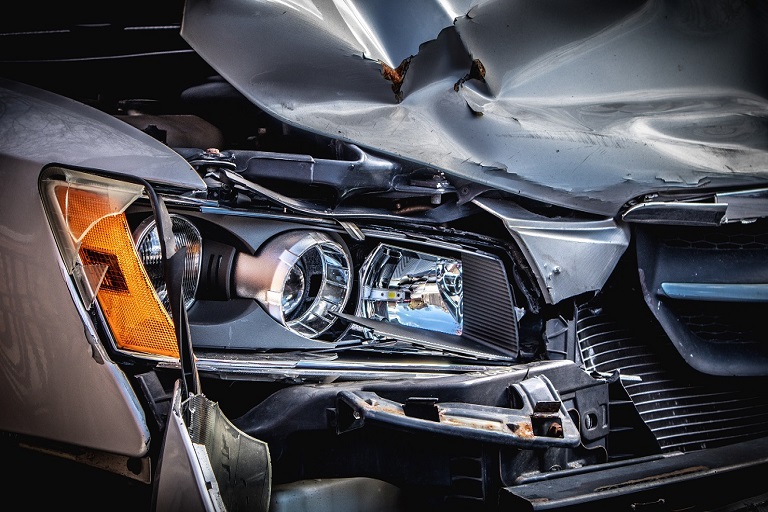
Parent’s Guide for Teen Drivers After an Accident
When teens reach the legal age to obtain a driver’s license and experience the liberty of driving, many parents hold onto their seats and brace themselves for the possible outcomes, and it’s no surprise, as teens drivers in the US are involved in more accidents than any other age group. Regardless of how careful your budding young driver might be out on the public roads, accidents happen, and in serious circumstances, these fender-benders can introduce a range of unwanted new challenges for you and your teen to overcome.
The good news is, as a parent, you can play an active role in their recovery, employing a range of techniques to support your teen through the confusing process so that they can return to driving, if they wish to, as smoothly as possible. From filing the insurance claim and retrieving the vehicle to overcoming the psychological barriers that can plague crash victims with lasting effects, this guide will take you through all the recommended procedures to help your teen get back on their feet.
Reassure them
Oftentimes, the trauma of being in a car accident leaves a lasting mark on teen drivers’ confidence and can frequently dent their confidence and self-esteem – especially if it’s their first crash. If it was your vehicle that sustained damage in the traffic accident, it’s possible they might feel guilty or worried about the consequences.
In the days, weeks or months after the crash, it’s normal for your teen to display signs of withdrawn behavior, and they may appear more anxious or shy than usual. This is why it’s important as a parent to offer them care and reassurance in the hopes of reducing the probability that they dwell on negative thoughts surrounding the event or assume blame or guilt for what happened.
Help them make a plan
After an accident, the process of informing the insurance company and submitting the necessary documentation can be an involving process. If they are responsible for the vehicle, make sure they have a plan to keep track of all the actions required and that they do not miss any communications with the police or insurance company.
If matters surrounding the accident have not yet been reported, we advise you to assist them with filling out the necessary details in order to avoid further trouble or delays in your insurance company processing your claim.
Documenting the accident
You should have the following information from any parties involved in the accident:
- Full name, home address, and telephone number
- Driving license number
- License plate number
- Make and model of the vehicle
- Color of vehicle
- Insurance company name
- Insurance policy number
If a driver involved in an accident is not the insurance policy owner, you’ll need to obtain their contact information to share with your insurance company. If you feel uncertain you’ve been given the correct information, you can request to see the license or other proof of ID.
Notify the insurance company
The next step is to make sure the insurance provider has been notified of the accident so that they can take the next steps.
Depending on the severity of your teen’s accident and whether or not they happened to sustain personal injuries, they may be required to complete forms or answer questions to provide information that will help determine liability.
If you or your teen son/daughter collected photos or other useful evidence at the scene of the accident, this could be shared with the insurance company or legal representatives to help build a case.
Rebuild their confidence
Once the vehicle and insurance proceedings have been dealt with, you can focus on helping your teen regain the confidence to return to driving.
A great way to help them steadily rebuild their confidence while simultaneously expanding and developing their driving skills is to enroll them in a local driving school or encourage them to take classes with a professional instructor.
There are schools all over the country committed to helping teen drivers improve their driving skills so that they can become safer, more responsible drivers. Helping them further their knowledge of the highway code and how to practice safe driving habits could help them avoid road accidents in the future.
Setting an example
As a parent, you are a highly-influential person in your teen’s life. Your behavior and actions you make will have many unknowing copies. If you are a driver and spend time driving with your teen, make sure you are doing your best to demonstrate safe driving habits, and refrain from practicing bad habits that they could develop.
With so many distractions and a lack of experience behind the wheel of many vehicles, teens can easily get into dangerous situations, either by distraction or poor judgment. By creating some rules that draw boundaries between what they can and can’t do when they drive, with any luck they will develop more respect for the road and other motorists who they share it with.
The greatest dangers to teen drivers are:
- Distraction
- Driving with teens in the car
- Driving while intoxicated
Particularly difficult circumstances for new drivers, such as driving at night, in heavy traffic, in bad weather, or with passengers in the vehicle, are aspects of driving that pose a great risk to teen drivers. Driving at night poses a risk to all of us, especially during the late nights towards the weekend when the streets are busier and the likelihood of drunk drivers is higher. To have the peace of mind that your teen will be safe in these situations in the future, you can prevent them from driving alone until you or their driving instructor feels confident in their ability to do so.
Avoiding future accidents
Traffic accidents can be caused by a simple momentary lapse in concentration, misjudgment, or as a result of another driver’s error. Although not all accidents can be avoided, ensuring your teen’s allocated vehicle is functioning perfectly is a simple way to reduce their chances of being involved in a wreck in the future.
Make sure their vehicle is serviced by a qualified professional with quality parts. The tires are the most important part, so you should always confirm they are in good condition. Check the tire pressures with the values stated in the vehicle manual or by reading from the side of the tire if it is printed there. Ensure they check the tire pressures every few weeks, and even more so, temperatures are hotter.
We recommend you have a breakdown cover in case your teen suffers a punctured tire or needs to be recovered to a safe location after a breakdown. Breakdown cover will allow you or your teen to receive roadside assistance sooner, minimizing the time spend in a dangerous location at the roadside with passing vehicles.
In case of an accident
In the unfortunate event your teen is involved in a future accident, get them to read and commit the following procedures to memory. This will help them stay calm and receive the emergency services they require without delay.
Immediately after an accident, you should:
- Check yourself for injuries
- Check the well-being of passengers
- Get to a safe place
- Call 911
- Check on other parties
- Deploy warning devices
- Wait for help to arrive
- Exchange details
- Document the scene
Call 911
For a minor or major accident, it’s important to call 911 and explain what happened so that the corresponding emergency services can be dispatched to your location.
In some states, it may be a legal requirement to call 911 or to request the presence of the police in event of a road traffic accident.
When you call 911, the operator will ask you for details regarding the accident.
Speak clearly and concisely with the correct information. Remember to remain on the line until the operator asks you to end the call.
The 911 operator will ask:
- Who was involved in the accident? Give your details and the details of others who are involved.
- What happened? How the accident occurred, are people trapped in vehicles or injured? Is there a fire? Are the cars involved situated dangerously?
- Where has the accident taken place? Give the city/town name, street name, mile marker, notable landmarks, and direction of travel.

